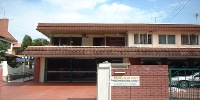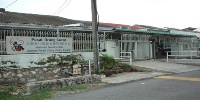Enthusiasts claim that garbage enzyme works its magic indoors and outdoors. But not everyone is convinced of its benefits.
IT IS every housewife’s dream – a multipurpose cleaner that is all-natural, environment- friendly, non-toxic, free of synthetic chemicals and best of all, can be made from kitchen scraps.
Sounds too good to be true, right? But many who have made and used this cleaner swear by it. Making this wonder cleaner merely involves fermenting kitchen waste with brown sugar and water for three months. The resulting brown, vinegary solution is commonly called garbage enzyme and is diluted with water for use – and it appears to be able to work miracles.
Testimonies on its uses appear endless: to do the dishes and laundry, mop the floor, scrub the toilet and bathroom, remove stubborn stains, for body care, as deodoriser and antiseptic and to clear blockages in pipes and drains. It will even repel ants, mosquitoes, cockroaches, lizards.
 Using citrus fruit waste will lend a pleasant scent to the garbage enzyme.
Using citrus fruit waste will lend a pleasant scent to the garbage enzyme. In farms, garbage enzymes have found use as a natural pesticide, herbicide, fertiliser and odour remover, and is also added to animal feed to improve digestion of livestock. And in the garden, it will make your plants flourish, bloom and fruit. Prisca Loke can testify to that. “Because of my busy schedule, I never had time to take care of my plants and they looked horrible. But after I sprayed them with garbage enzymes, they grew lush and started flowering. That converted me into a garbage enzyme user,” says the assistant human resource manager.
Loke now relies on garbage enzymes for many of her household chores. She finds it effective in removing grease from pots and pans and kitchen counters, as well as stubborn stains from her children’s white school shirts (she soaks them in diluted enzyme solution before the normal laundering).
Most of what she knows is from experimenting and sharing experience with friends.
“I could not find any scientific analysis on the enzyme on the Internet but from my personal experience and talking with friends, I find that the enzyme is useful.”
She has tried fermenting different fruit wastes since all will produce different enzymes, and some might be more effective for certain tasks than others. Ever willing to share her knowledge, Loke has given demonstrations on enzyme-making to her colleagues at Sunrise Bhd and residents of Sunrise Mont Kiara in Kuala Lumpur.
Enzyme evangelists
 Dr Joean Oon uses diluted enzyme solution to clean vegetables.
Dr Joean Oon uses diluted enzyme solution to clean vegetables. Poultry seller Tan Yew Leong has also turned enzyme-advocate after seeing how it has reduced foul odours emanating from the Section 17 market in Petaling Jaya, Selangor .
“The market used to smell as the council only cleans it once a week or once a month by spraying water. Since we started spraying the enzyme (diluted with water) daily, it is not so smelly and there are fewer flies. The drains are also cleaner,” says Tan who has been making full use of vegetable and fruit discards at the market.
His home is filled with about 100 tanks, both big and small, of fermenting waste.
“Some other hawkers are also making the enzyme themselves after seeing its effectiveness,” says Tan, who provides free enzyme for cleansing of the market. He also sells the solution by the bottles but thinks it best that people make it themselves as they would reduce their waste.
Tan uses the enzyme liberally at home. “About 70% of the cleaning at home is now done using the enzyme, for mopping the floor and cleaning the toilets and bathroom. My family has reduced the use of chemicals and there are no more cockroaches in my house,” says the satisfied user.
The benefits of garbage enzymes is said to extend beyond the home. Apparently, when enzyme-laced wastewater flows down kitchen sinks and bathroom pipes, it supposedly continues to work its magic in drains, sewers and eventually, streams and rivers. This idea has spurred a project to get some 10,000 households in Petaling Jaya to produce their own garbage enzyme for home use.
The Danish-funded project by Section 19 Residents Association, Justlife (an organic food chain) and Beautiful Gate Foundation for the Disabled, will see enzyme-making demonstrations for residents’ associations and other community groups in the next five months. In Thailand, households’ use of garbage enzymes is said to have helped keep some streams clean.
“When people use the enzyme to clean dishes and do the laundry, the discharged water will finally end up in ponds and streams, so indirectly cleaning up the water bodies,” says Lee Lih Shyan, senior assistant director of the Local Agenda 21 programme at Petaling Jaya City Council. This approach benefits the environment more than that of pouring drums of garbage enzymes into ponds and rivers to cleanse the water bodies as practised by some communities in Penang. Lee says cleaning up ponds and rivers this way is an exercise in futility if pollution is not stemmed at the source.
“Such efforts will not be effective unless there is a group producing the enzyme in large quantities and continuously pouring it into the river. There is no point in doing it once or twice,” he says.
Where is the science

But exactly how and why this miraculous solution works is unclear. Even its advocates can’t quite explain the science behind it.
“There have been tests done but all the information is in Thai. I do not have the resources to get them translated into English or to research into how it works. And I’m not a chemist, so I don’t know how to explain it.
All I can say is that people have used it, and it works,” says Penang-based naturopathy practitioner Dr Joean Oon, Oon had learnt about garbage enzymes from its originator, Dr Rosukon Poompanvong, a pioneer of Thailand’s organic farming movement and a Food and Agriculture Organisation award recipient for her work in using fermented organic waste for crop fertilisation, pest protection and livestock feed.
Scientists spoken to say it is the microorganisms present in waste that produce the enzymes. The fermentation produces acetic acid, characterised by its vinegary smell, and it is the acid that gives the solution its cleaning prowess; vinegar, after all, is a traditional household cleaner.
The usefulness of enzymes has long been known. Enzymes act as catalysts – they increase the rates of chemical reactions.
In the human body, enzymes help in digestion and other bodily functions.
In wastewater treatment, enzymes accelerate decomposition of organic substances.
Enzymes have also found their way into commercial goods: in detergents, they improve the cleaning performance while in cleaning solutions, they eat away organic material that clog up pipes.
While the cleansing ability of garbage enzymes can be explained, claims on its other abilities seem pretty far-fetched – for instance, its role in repairing the ozone layer and in reducing global warming. Its proponents say ozone generated by the enzyme solution will bind with heavy metals in the air to reduce global warming. The ozone will also react with other elements such as nitrogen and sulphur to form nitrates and sulphates, which make good plant nutrients.
The science behind these claims, however, is sketchy. It does not help that the few documents available from Oon have been poorly translated into English from Thai. In Internet chat groups, some have censured the claims, especially the one about repairing the ozone hole. It is argued that ground-level ozone is unstable and will break into oxygen before it has any chance to migrate to the stratosphere (10 to 48km above sea level) to form the beneficial ozone layer that prevents harmful UV radiation from reaching the Earth.
Also, ground-level ozone (it results when nitrogen oxides and organic gases, emitted by automobiles and industrial sources, react with air) is a toxic gas and irritant, and causes smog. In recent technologies, ozone is used to disinfect water as well as sterilise air and certain foods but the amount of ozone produced in garbage enzymes is so low that it would have little effectiveness.
Possible toxins
Sewerage plants do rely on beneficial bacteria to break down waste but no one knows for sure if the flushing of garbage enzymes down the toilet, as advocated by its proponents, would not lead to ill effects in the long term.
Likewise, flooding lakes and rivers with enzymes might be harmful if too much is used – it might well deplete oxygen levels in the water due to higher organic matter. Also, the anaerobic fermentation involved (the enzyme is made in an air-tight container) will release methane, a potent greenhouse gas. Dr P. Agamuthu, a professor in waste management at Universiti Malaya, has questions too regardin g garbage enzyme. That the solution is beneficial for plants does not surprise him as it is rich in nutrients from the sugar.
However, he is wary about using the solution in the shower and to wash dishes and food. “Since it involves fermentation of waste, there might be pathogens in the mixture. In normal composting of solid waste which is water-free, temperatures can reach to 65°C to 70°C, and this will destroy most pathogens. Fermentation, however, will never reach this temperature, especially when water is added.”
He is uncertain if it is the enzymes, or other chemicals that are doing the job. To clear these doubts, Agamuthu intends to conduct his own tests with the enzyme to see what it contains and its effect on plants and soil.
Following the barrage of criticisms, Oon has decided to stop linking garbage enzymes with ozone depletion and global warming – but only because she is stumped when asked to explain the scien ce. She adds that she does not urge people to pour the enzymes into rivers to clean waterways – that was done initially just to create an activity and to promote public awareness.
Sincere in wanting to encourage green practices, she now expounds on only one aspect of garbage enzymes: “It makes good use of kitchen waste which would otherwise end up in landfills and generate methane, a potent greenhouse gas. It is something that housewives can do. And the enzyme also reduces our reliance on chemical cleaners, detergent and fertilisers.”
Ambiguities aside, the garbage enzyme movement has found quite a following and many attest to its efficacy. Still, until more tests are done on its contents and long-term effects, it might be wise to use it judiciously.
Sources: The Star






No comments:
Post a Comment